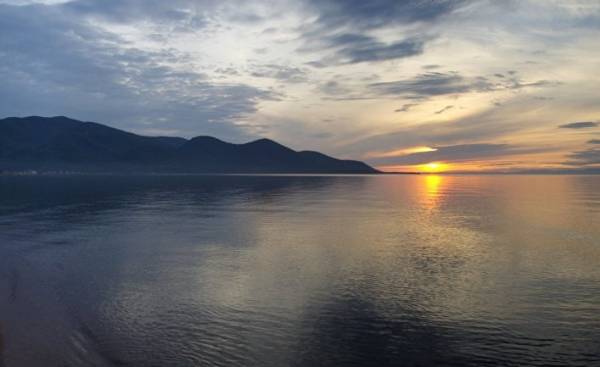
The nature of lake Baikal called “the pearl of Siberia” and the entire planet. The area of lake Baikal is 23 000 km2. It is the largest natural reservoir of fresh water, comparable in size to the Baltic sea or the Great lakes of the United States. The volume of lake Baikal is equal to 20% of all world reserves of fresh water in the free state. Today its water is threatened by pollution and global warming.
Baikal ranks sixth among the largest lakes in the world. Baikal is the deepest (1 642 m) and oldest lake on Earth. According to scientists, it 25-30 million years. The lake is also one of the coldest: despite the fact that it is located in the South of Siberia the average water temperature is only 6 °C. the Crystal clear water is very rich in oxygen, which contributes to the development of the fauna (1 550 species) and fauna (600 species), half of the varieties which are found nowhere in the world is not found. The lake has long been the object of environmental protection. In 2006 Vladimir Putin ordered to move the pipeline, which passed too close to lake Baikal. But, unfortunately, the air and water 336 rivers and streams flowing into the lake, catchment area equal to France, contributed to the pollution of the lake. Ongoing climate change can also affect pollution.
Disturbing sign
A group of Russian and German scientists focused on finding a method of measuring the level of heavy metal pollution and the calculations of resistance increase in temperature, which increased by 1.5 °C over the last 50 years. “And it continues to grow,” says till, Luckenbach (Till Luckenbach), a scientist of the German Centre for environmental research Helmholtz Leipzig. “The winter, when the lake freezes, reduced. We also found chemical contamination”.
Scientists chose as indicators of a healthy environment the lake two species of amphipods. This is a small shrimp of the genus Eulimnogammarus (E. cyaneus and E. Verrucosus), which play a very important role in ecological security of the lake and food chain. The studies were conducted in the laboratory at the University of Irkutsk, to test their sensitivity to temperature. And if E. cyaneus feels great when the water temperature is 20 °C, E. Verrucosus,especially females, are forced to migrate inland to survive.
The same team of scientists tested the sensitivity of shrimp to heavy metals, particularly cadmium. The lake at the moment there is this problem, but Selenga river, its main tributary, begins to be polluted with waste mining enterprises in Mongolia. “The smallest shrimp, E. cyaneus, cadmium absorb faster and therefore die at lower concentrations,” explains ecologist Lena Jacob from the Institute for polar and marine research them. Alfred Wegener, Bremerhaven, the first of the two signatories of the report on the done work. “We also noted that E. verrucosus slows the metabolism even at low doses of cadmium. It is an alarming sign, because it means he will eat less, will not reproduce and will be more vulnerable to predators. Our work shows that even at low levels of environmental pollution, it can have a significant impact on species and ecosystems”. The health of lake Baikal is currently under observation with the help of these small amphipods, which can prevent the occurrence of problems.







